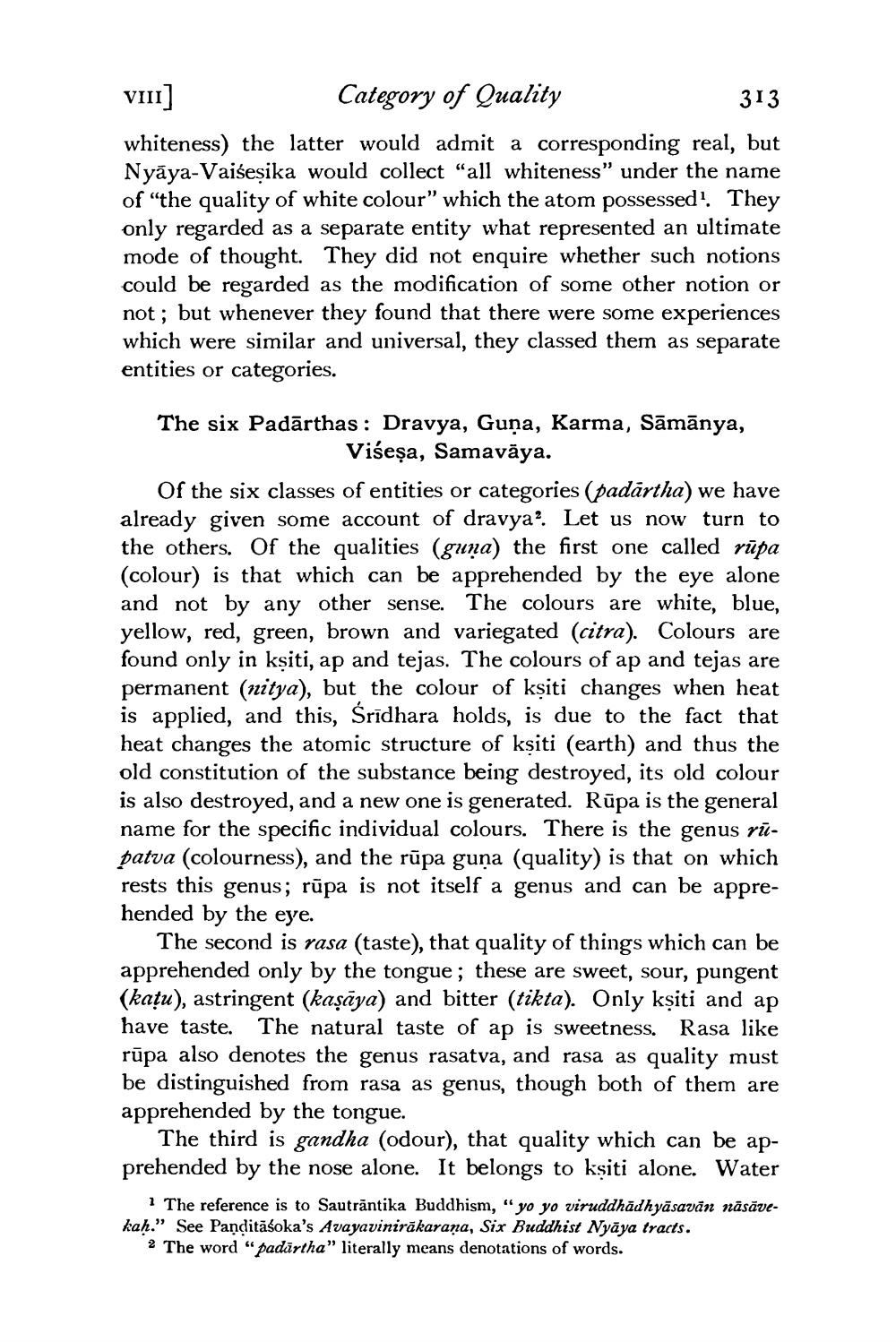________________
VIII]
Category of Quality
313
whiteness) the latter would admit a corresponding real, but Nyāya-Vaiseṣika would collect "all whiteness" under the name of "the quality of white colour" which the atom possessed'. They only regarded as a separate entity what represented an ultimate mode of thought. They did not enquire whether such notions could be regarded as the modification of some other notion or not; but whenever they found that there were some experiences which were similar and universal, they classed them as separate entities or categories.
The six Padarthas: Dravya, Guņa, Karma, Sāmānya, Viśeşa, Samavāya.
Of the six classes of entities or categories (padartha) we have already given some account of dravya'. Let us now turn to the others. Of the qualities (guna) the first one called rupa (colour) is that which can be apprehended by the eye alone and not by any other sense. The colours are white, blue, yellow, red, green, brown and variegated (citra). Colours are found only in kṣiti, ap and tejas. The colours of ap and tejas are permanent (nitya), but the colour of kṣiti changes when heat is applied, and this, Śrīdhara holds, is due to the fact that heat changes the atomic structure of kṣiti (earth) and thus the old constitution of the substance being destroyed, its old colour is also destroyed, and a new one is generated. Rūpa is the general name for the specific individual colours. There is the genus rūpatva (colourness), and the rūpa guna (quality) is that on which rests this genus; rūpa is not itself a genus and can be apprehended by the eye.
The second is rasa (taste), that quality of things which can be apprehended only by the tongue; these are sweet, sour, pungent (katu), astringent (kaṣāya) and bitter (tikta). Only kṣiti and ap have taste. The natural taste of ap is sweetness. Rasa like rūpa also denotes the genus rasatva, and rasa as quality must be distinguished from rasa as genus, though both of them are apprehended by the tongue.
The third is gandha (odour), that quality which can be apprehended by the nose alone. It belongs to kṣiti alone. Water
1 The reference is to Sauträntika Buddhism, "yo yo viruddhadhyasavän näsävekah." See Panditāśoka's Avayavinirākaraṇa, Six Buddhist Nyaya tracts.
2 The word "padartha" literally means denotations of words.




